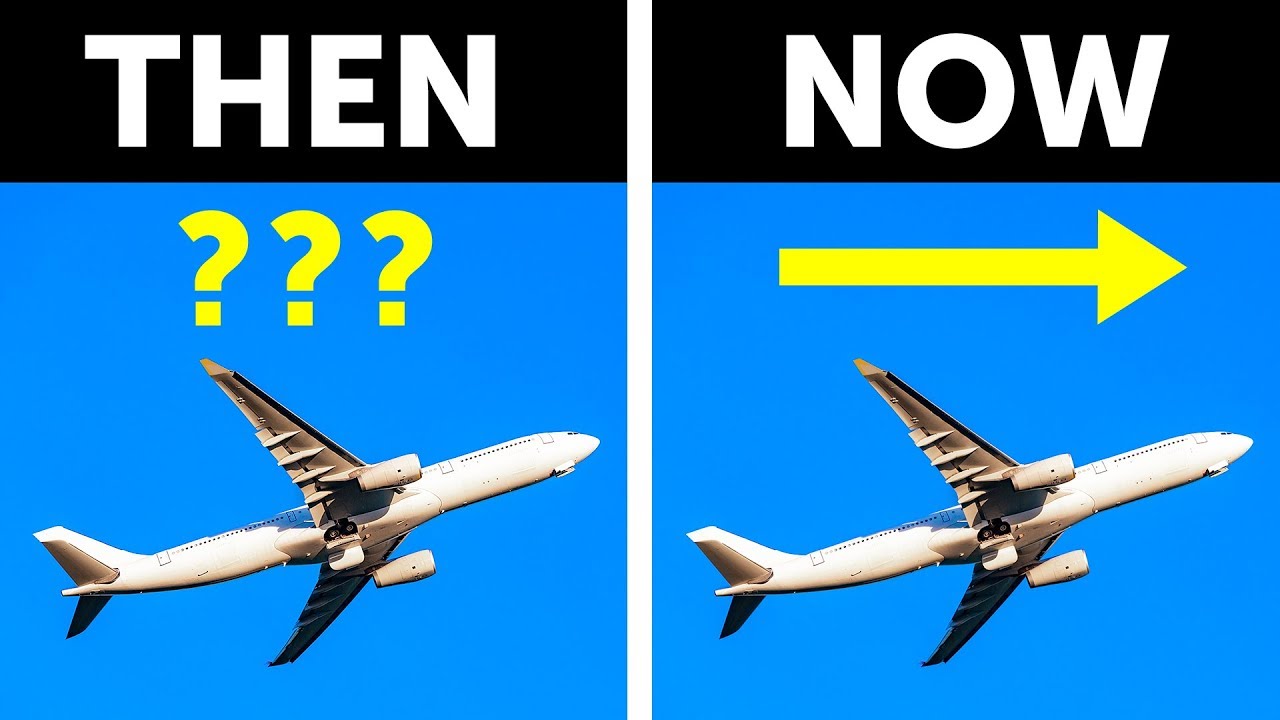How a Tiny Island Changed the Way We Fly
Ilaitia Tabakaucoro is a Fijian man who worked as an air traffic controller in the early 90s. Around that time, he and some pilot buddies decided to take a quick hop across the water from Fiji’s main island of Viti Levu to one of the smaller islands in the northeastern part of the archipelago.
Not long after the main island disappeared behind them, their plane was struck by a crosswind that knocked it off course. They realized they were lost in the blue expanse of the Pacific Ocean. Things looked pretty dire before Tabakaucoro suddenly remembered that their plane had recently been equipped with GPS. This might seem like a mundane story but at the time, GPS was still relatively new…
Other videos you might like:
7 Islands No One Wants to Buy Even for $1 https://www.youtube.com/watch?v=4X7hYE_Cg5o
A Secret New York Island That You Can Never Visit https://www.youtube.com/watch?v=a2s8G0WH4iM&
A New Continent Is Discovered on Earth In the Pacific Ocean https://www.youtube.com/watch?v=bMncyN_C-pQ&
TIMESTAMPS:
Celestial navigation 1:31
The first GPS satellites 3:24
Where Fiji enters the picture 4:44
#aviation #Fiji #brightside
SUMMARY:
– From the 1940s until the late 80s, aircraft navigation relied on a combination of radar, radio, and just looking out the window to figure out where you were.
– Planes oriented themselves based on a combination of radio beacons and visual landmarks.
– Planes traveling any distance over the ocean would need to employ a crew member known as a flight navigator.
– One of the main methods was celestial navigation, and it wasn’t without fault. It relied on using the sun, moon, and stars to identify the plane’s coordinates, but needed clear skies to be effective.
– The first GPS satellite launched in 1978, with an additional twenty-three satellites launching over the following fifteen years.
– The US government had considered making GPS technology available to the public.
– The government also made plans to increase the number of GPS satellites from fifteen to twenty-four.
– The island nation had been a popular tourist destination for many years and showed no sign of slowing down in the early 90s.
– In 1994, Fiji approached the US and volunteered itself as a test market for commercial GPS technology.
– Fiji still needed to retrofit its entire commercial air fleet and train the crews on how to use the new equipment. But once that was done, it wasn’t long before the country began reaping its rewards.
– Because GPS works just as well regardless of weather, planes no longer need to be turned around mid-flight due to poor visibility.
– Prior to GPS becoming widely available, two jets flying the same route couldn’t be less than one hundred miles apart.
– Thanks to GPS, planes can now safely fly within twenty-three miles of each other, and the delay for successive flights has been cut down to only ten minutes.
– Another change is that planes no longer need to carry enough fuel to always return to their point of departure.
– Needless to say, Fiji and the FAA were ecstatic to find out that their investment paid off.
– GPS technology has made flights radically faster, safer, and, when adjusted for inflation, less expensive than they were as recently as thirty years ago.
Music by Epidemic Sound https://www.epidemicsound.com/
Subscribe to Bright Side : https://goo.gl/rQTJZz
—————————————————————————————-
Our Social Media:
Facebook: https://www.facebook.com/brightside/
Instagram: https://www.instagram.com/brightgram/
5-Minute Crafts Youtube: https://www.goo.gl/8JVmuC
Stock materials (photos, footages and other):
https://www.depositphotos.com
https://www.shutterstock.com
https://www.eastnews.ru
—————————————————————————————-
For more videos and articles visit:
http://www.brightside.me/



![[ID: jvNU5bwzclI] Youtube Automatic](https://bizimtube.com/wp-content/uploads/2021/03/id-jvnu5bwzcli-youtube-automatic-236x133.jpg)
![[ID: 0yCJMt9Mx9c] Youtube Automatic](https://bizimtube.com/wp-content/uploads/2021/03/id-0ycjmt9mx9c-youtube-automatic-236x133.jpg)
![[ID: vAJM5EdDwjU] Youtube Automatic](https://bizimtube.com/wp-content/uploads/2021/03/id-vajm5eddwju-youtube-automatic-236x133.jpg)
![[ID: LxOmofEFub4] Youtube Automatic](https://bizimtube.com/wp-content/uploads/2021/03/id-lxomofefub4-youtube-automatic-236x133.jpg)
![[ID: wFAh77GBsHs] Youtube Automatic](https://bizimtube.com/wp-content/uploads/2021/03/id-wfah77gbshs-youtube-automatic-236x133.jpg)
![[ID: tjwrG4Debc4] Youtube Automatic](https://bizimtube.com/wp-content/uploads/2021/03/id-tjwrg4debc4-youtube-automatic-236x133.jpg)
![[ID: _28bYGZtnU8] Youtube Automatic](https://bizimtube.com/wp-content/uploads/2021/03/id-28bygztnu8-youtube-automatic-236x133.jpg)
![[ID: 1e7bhUjUEJ8] Youtube Automatic](https://bizimtube.com/wp-content/uploads/2021/03/id-1e7bhujuej8-youtube-automatic-236x133.jpg)
![[ID: QjyCviSKY2U] Youtube Automatic](https://bizimtube.com/wp-content/uploads/2021/03/id-qjycvisky2u-youtube-automatic-236x133.jpg)
![[ID: -5i-vB4-kFk] Youtube Automatic](https://bizimtube.com/wp-content/uploads/2021/03/id-5i-vb4-kfk-youtube-automatic-236x133.jpg)
![[ID: covHhQgr5kU] Youtube Automatic](https://bizimtube.com/wp-content/uploads/2021/03/id-covhhqgr5ku-youtube-automatic-236x133.jpg)
![[ID: mX7FEHws43A] Youtube Automatic](https://bizimtube.com/wp-content/uploads/2021/03/id-mx7fehws43a-youtube-automatic-236x133.jpg)